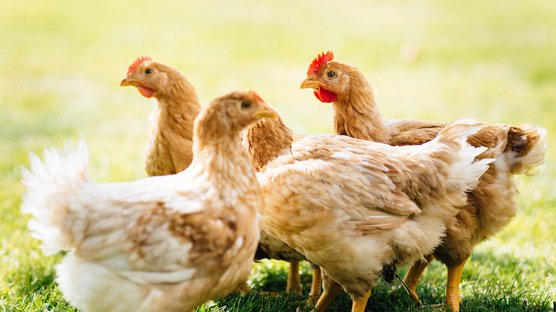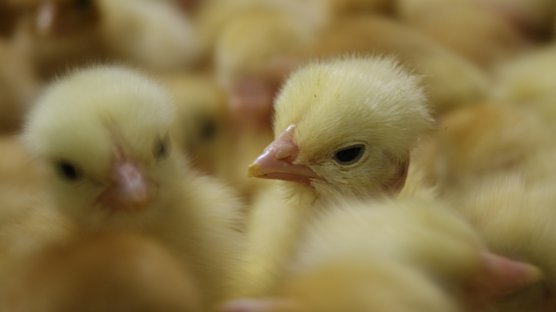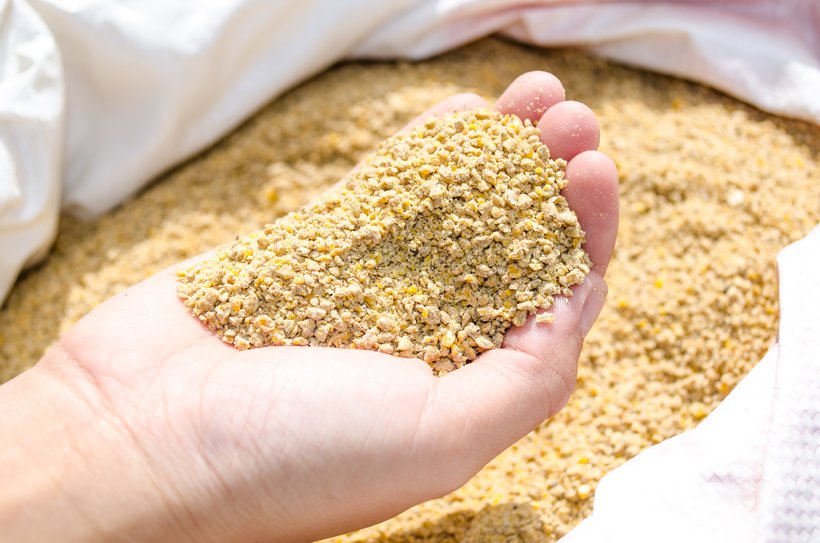
Published on June 11, 2024
Nutrition for hens and roosters
In this article we will discuss different points in order to understand how to properly feed your hens and roosters. We will talk about the amount of feed to use, the duration of the meal and the nutritional needs of the hens.
Nutrition for hens
Laying peak
Quantity of feed
Throughout the rearing period, the feed ration is given depending on growth. It is therefore the body weight which is the main indicator for the calculation of the quantity of feed to be given.
Once laying has started, the daily ration is given depending on the laying rate. The body weight is no longer such a relevant indicator and, furthermore, it is too late to change it. The quantity of feed must increase each day. On the one hand the hens must be encouraged to lay by sending a signal of abundant resources and, on the other hand, enable them to cover their needs linked to egg production. The following objectives should be adhered to:
- The feed ration increases by about 5 g/day from 0.5% to 1% daily laying and with the objective of 120 to 125 g of feed per day between 30% and 40% laying (for our SA51, SA51A, SA51N and SA31A strains).
- The feed ration increases by about 1 g/day as soon as 85% laying is reached, until 130 to 135 g/d is reached at the peak.
Errors to be avoided
Often SASSO recommendations for the rapid change in the feed quantity are not followed. In many cases, in fact, it is seen that the increase in the feed ration is too slow. The consequence of this is obtaining a laying peak that is maybe correct but cannot be maintained. As the hens produce one egg per day in this period, if the feed ration is insufficient, they will draw on their own reserves and cannot maintain the laying frequency. In fact, at this stage almost all the feed ration energy is used for laying.
Reminder: Protection of the liver
When the feed consumption increases, the liver is under greater stress. It is important to ensure that it is in good health to prevent any problems. We recommend applying the following protocol:
- reach 20 weeks with the target weight recommended by SASSO
- as soon as the first eggs appear, add a hepato protect for three weeks
- repeat the use of a hepato protect every 6 weeks.
Meal duration
With the increase in the feed ration, the hen will take longer and longer to finish her meal. When the average duration of the meal exceeds 3 h, the feed ration should be split into two (morning and evening).
Technical tip
It is important to give 50% of additional feed ration technique the day before the first day when the feed ration is split into two. In fact, the hens will be less surprised to only receive half a feed ration at the first meal if they have eaten more the previous day. In this way stress and floor laying due to waiting at the feeder are avoided.
As the feed ration is increased, the period when the feeders are empty must be controlled. The feed ration must never increase to the point where the empty feeder duration is less than 3 h.
This limit is generally reached when approaching peak production. Each day the feed ration is increased by one gram and we ensure that the empty feeder duration is sufficient.
When the limit is reached, increasing the feed ration is stopped (this should be close to 130 g of feed depending on the strain, the feed formulation, the climate and the rearing system)
Technical tip
To facilitate mating and scratching as well as preventing annoyance and suffocation, each day the farmer distributes heat-treated whole wheat or cracked corn once or more often during the afternoon. Grit must always be provided to facilitate the digestion of these cereals. However, when the climate exposes the animals to high temperatures, it is not recommended to encourage activity by these distributions.
Whatever the scenario, distributing the feed should be avoided:
- when the hens are mainly in the nests
- if the feed chains are not empty
- during very hot weather
Peak laying generally ends 4 to 5 weeks after the start of laying. Then, week after week, a progressive decrease in the laying rate is observed. The objective is that this reduction should be as slow as possible.
Technical tip
To know when to give each part of the feed ration, the exterior temperature can be taken into consideration (especially in an open building). A feed ration consumed in the morning when it is cool stimulates consumption and allows digestion when it is hottest. The other part of the meal could be taken at the end of the day.
After the laying peak
As laying is increasing and until the peak, the increase in the feed ration makes it possible to support laying activity. This decreases progressively during the entire life of the animal in a natural way. The feed ration should be adapted to limit fattening of the breeding hens, which would accentuate the reduction in laying.
Even if the peak has not been particularly high, it is important to slow the decrease in laying as much as possible to collect the maximum number of hatching eggs over the whole production period.
THE PARAMETER TO BE MONITORED HERE TO CONTROL THE FEED RATION IS THE EGG WEIGHT.
The weight of the egg increases naturally with the animal's age as well as with the feed ration. It is very important that the development of the egg weight is regular, i.e. in parallel with the egg weight evolution curve provided by SASSO.
So an egg weight slightly below the objectives must not be brought up to standard but should develop at a regular rate.
In practice, an evolution of +1 g of egg weight leads the feed ration to be decreased by -1 g. For example, let us take the case of 39-week SA51A hens with a daily feed ration of 124 g of feed and an egg weight of 60.1 g. At 42 weeks the egg weight is 61.1 g so the feed ration must be adapted and moves to 123 g per day.
Nutritional requirements of breeders
The feed formula is determined in collaboration with the feed manufacturer. However, some major elements absolutely must be taken into account so as not to deteriorate laying or the condition of the breeder flock.
The table below shows some effects of under- or over-feeding.
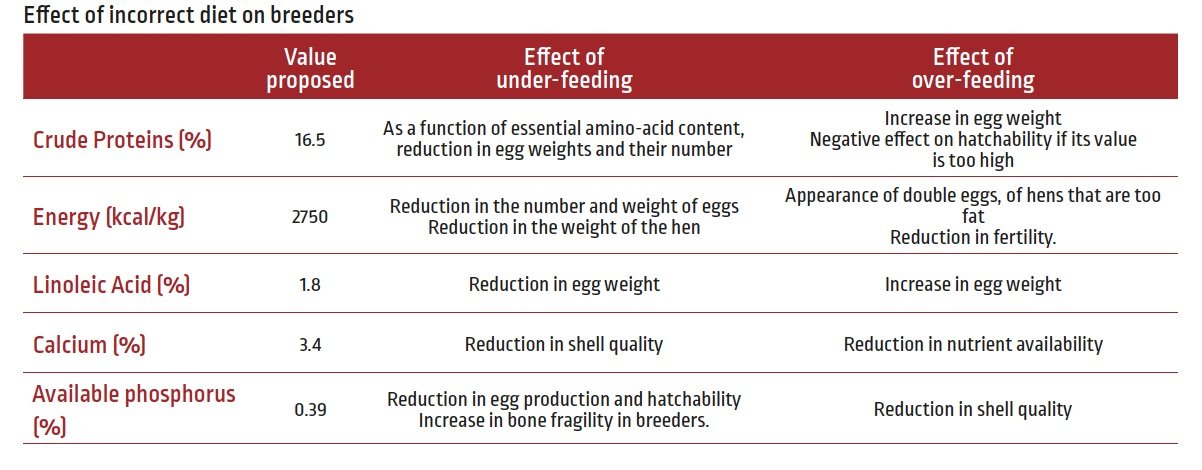
Here we offer you a feed formula suitable for SASSO breeders. This theoretical formulation is not always available. A SASSO batch may be reared correctly with many formulations by adapting the quantities to growth and taking care not to create deficiencies.
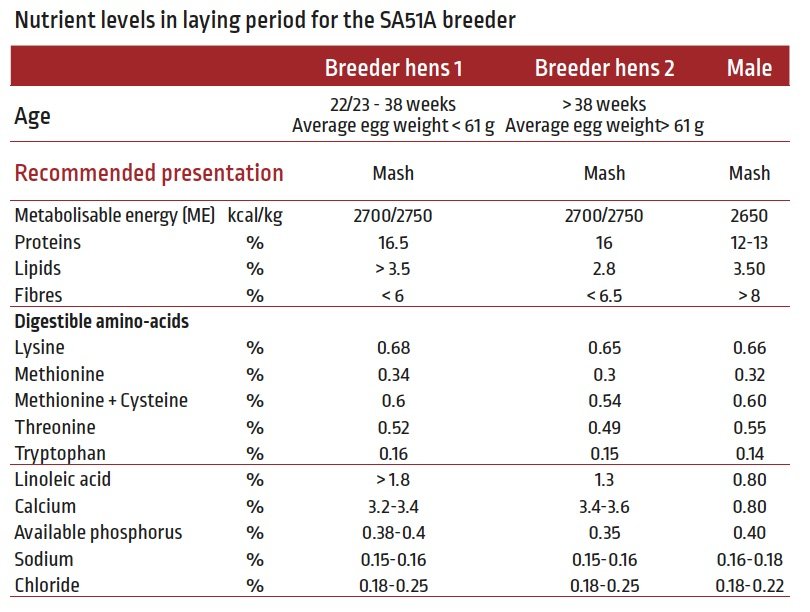
Several basic principles should be remembered.
In terms of energy needs:
- a reduction of 2 kCal per kg of body weight and per °C must be observed between 20 and 25°C ambient temperature
- a reduction of 15% of the feed ration is required when the hens are housed in cages (because their energy needs are less than floor rearing).
In terms of protein requirements:
- requirements vary depending on growth and the hens’ production levels
- deficiencies in essential amino-acids (sulphur amino-acids such as methionine and cysteine) should be avoided and a safety margin for these amino-acid intakes should be provided
In terms of calcium requirements:
- these requirements are important for the formation of the egg shell, which takes place during the night
- the digestibility rate for calcium varies according to the laying rate, between 70% during shell formation and 35% in the absence of egg formation. Increasing the calcium level at the end of the production period is recommended.
When observing these different elements, the ideal feeding period calculated as a function of the calcification period of the egg is late afternoon. A feed distribution 3 to 4 hours before the light is turned off facilitates calcification of the egg and enables the animals to have a significant energy reserve, particularly in the winter period.
Watering of breeders
Water rationing is an essential element in the dietary conduct of breeding hens. It makes it possible to prevent:
- digestive disorders
- deterioration of the litter.
REMINDER: Rationing is carried out according to the quantity of feed consumed daily. The quantity of water consumed over quantity of feed consumed per day ratio should be equal to:
- 1.5 to 1.6 in winter
- 1.8 to 2 in summer, even more depending on the temperature.
The ratio should be checked daily. Waste will also be prevented by adjusting the height of the drinkers and the level of water in them. Water should never be cut off whilst there is feed in the distribution circuits.
The distribution of water takes place half an hour before feed distribution. It is cut off one hour before the light is turned off in the building, except in periods of extreme heat when it can be distributed ad libitum. It is necessary to make sure the drinkers are empty and left dry during the night.
Technical tip
Hens and roosters have a strong gregarious instinct and technique it is not unusual to see them in groups around a single feeder or drinker (nipples here). However, it is always necessary to make sure there are enough drinkers for all the flock and that these operate correctly.
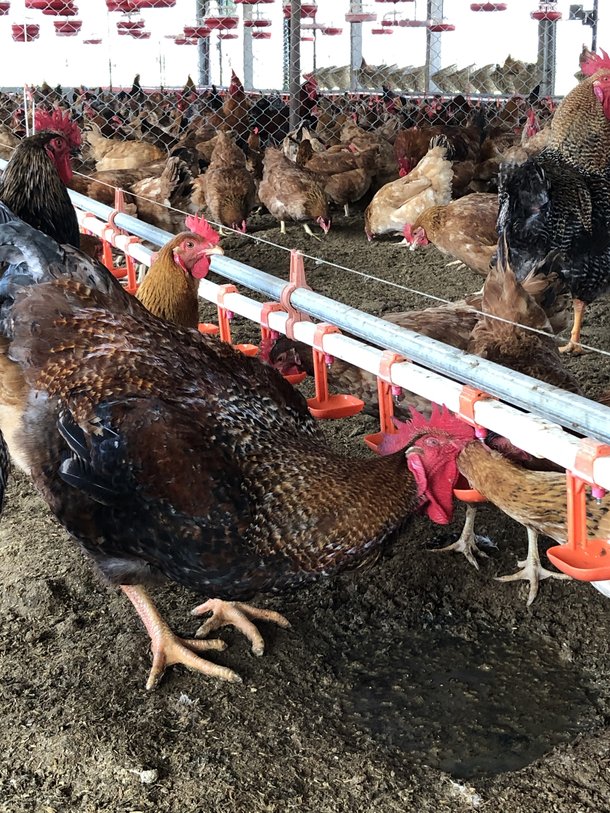
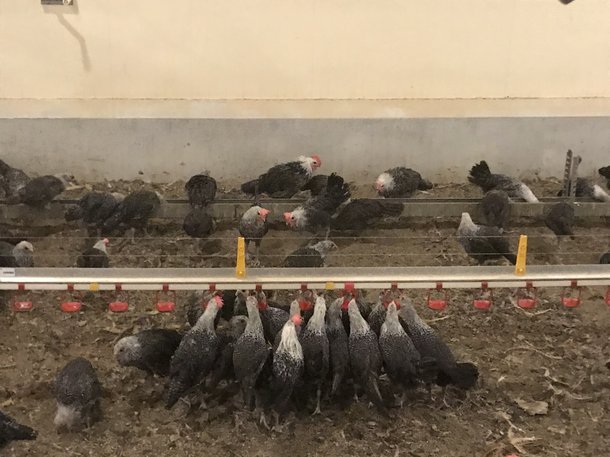
Nutrition for roosters
The roosters must be maintained at the correct weight, i.e. in the interval described in the SASSO recommendations. The weight should be sufficient to allow good carcass development and good sexual maturity when the time comes.
To provide the males with a sufficient quantity of feed in the presence of the females, additional feeders are place at a height for the roosters.
Technical tip
To prevent males developing the habit of eating in the feeders for the females, thus depriving them of their feed ration whilst exceeding the weight objective (which deteriorates their fertility), railings which only allow the heads of females to pass through must be used.
Errors to be avoided
As SASSO hens are bantams (apart from SA31L) many farmers are worried about the idea that mating will not take place properly and they prefer to ration the males to limit their weight gain as much as possible. Mating or treading is brief and take place correctly if the animals are on a stable support.
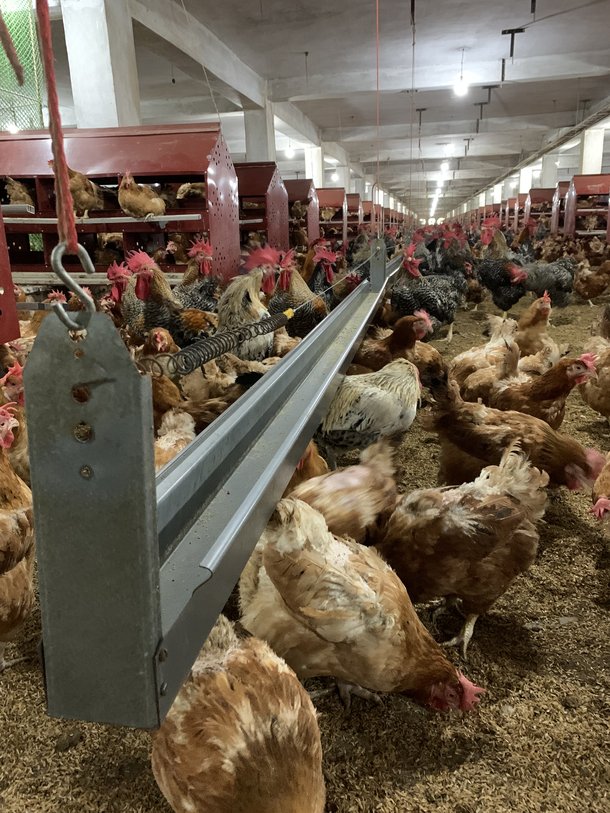
Figure 132: A cock feeder is used to feed males that do not have access to the protected feeding chains. The smaller hens (especially the dwarf SA51A, SA31A, SA51N) are not allowed access. It is important to raise them sufficiently.
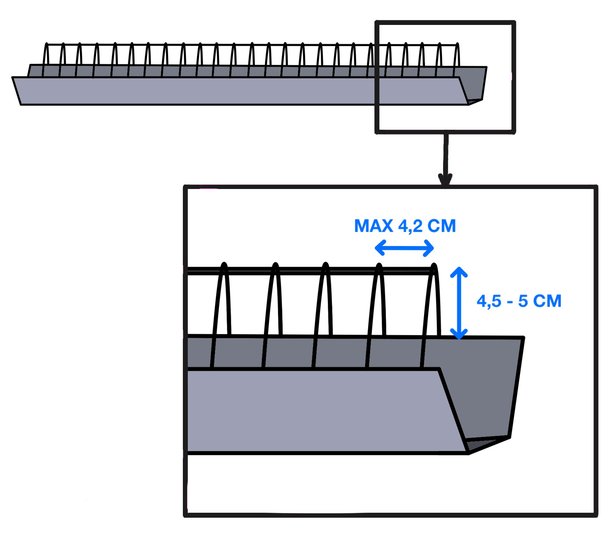
Figure 133: The use of screens allows only females, which do not have a highly developed crest and have a smaller head, to access the chain. The males are fed via separate dedicated feeders placed high up.

